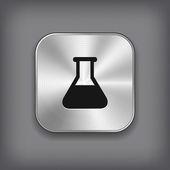Process optimization for metal additive manufacturing (AM) is crucial to ensure repeatability, control microstructure, and minimize defects. Despite efforts to address this via the traditional design of experiments and statistical process mapping, there is limited insight on an on-the-fly optimization framework that can be integrated into a metal AM system. Additionally, most of these methods, being data-intensive, cannot be supported by a metal AM alloy or system due to budget restrictions. To tackle this issue, the article introduces a Reinforcement Learning (RL) methodology transformed into an optimization problem in the realm of metal AM. An off-policy RL framework based on Q-learning is proposed to find optimal laser power ($P$) - scan velocity ($v$) combinations with the objective of maintaining steady-state melt pool depth. For this, an experimentally validated Eagar-Tsai formulation is used to emulate the Laser-Directed Energy Deposition environment, where the laser operates as the agent across the $P-v$ space such that it maximizes rewards for a melt pool depth closer to the optimum. The culmination of the training process yields a Q-table where the state ($P,v$) with the highest Q-value corresponds to the optimized process parameter. The resultant melt pool depths and the mapping of Q-values to the $P-v$ space show congruence with experimental observations. The framework, therefore, provides a model-free approach to learning without any prior.
翻译:金属添加剂制造(AM)的工艺优化对于确保重复性、控制微结构以及尽量减少缺陷至关重要。尽管努力通过传统的实验和统计过程绘图设计来解决这一问题,但对于可以纳入金属AM系统的在空中优化框架的洞察力有限,此外,由于数据密集,由于预算限制,多数这些方法无法得到金属AM合金或系统的支持。为了解决这一问题,文章引入了一种强化学习方法(RL),在金属AM范围内转化为优化问题。提议了一个基于Q学习的非政策RL框架,以找到最佳激光功率(P$)-扫描速度(v$)结合,以维持稳定状态熔化池深度的目标。为此,一个经过实验验证的Eagar-Tsai配方由于预算限制,无法得到激光调热能源储量环境的支持。为了解决这个问题,激光在模型-五美元空间范围内运行,以便最大限度地奖励熔化池深度更接近最佳的深度。培训过程的顶端将观测结果降为Q-数值最高值,因此,在熔化层框架上显示最高值前的焦值。



